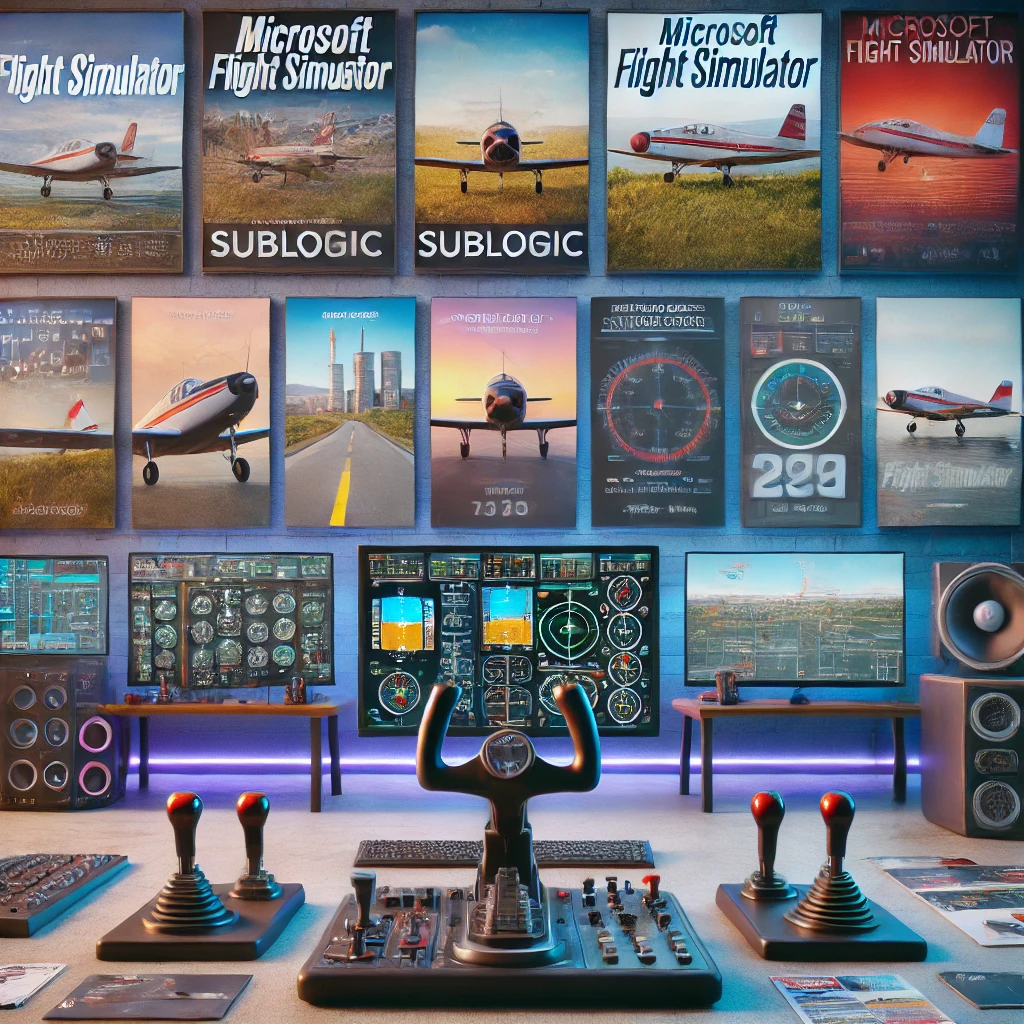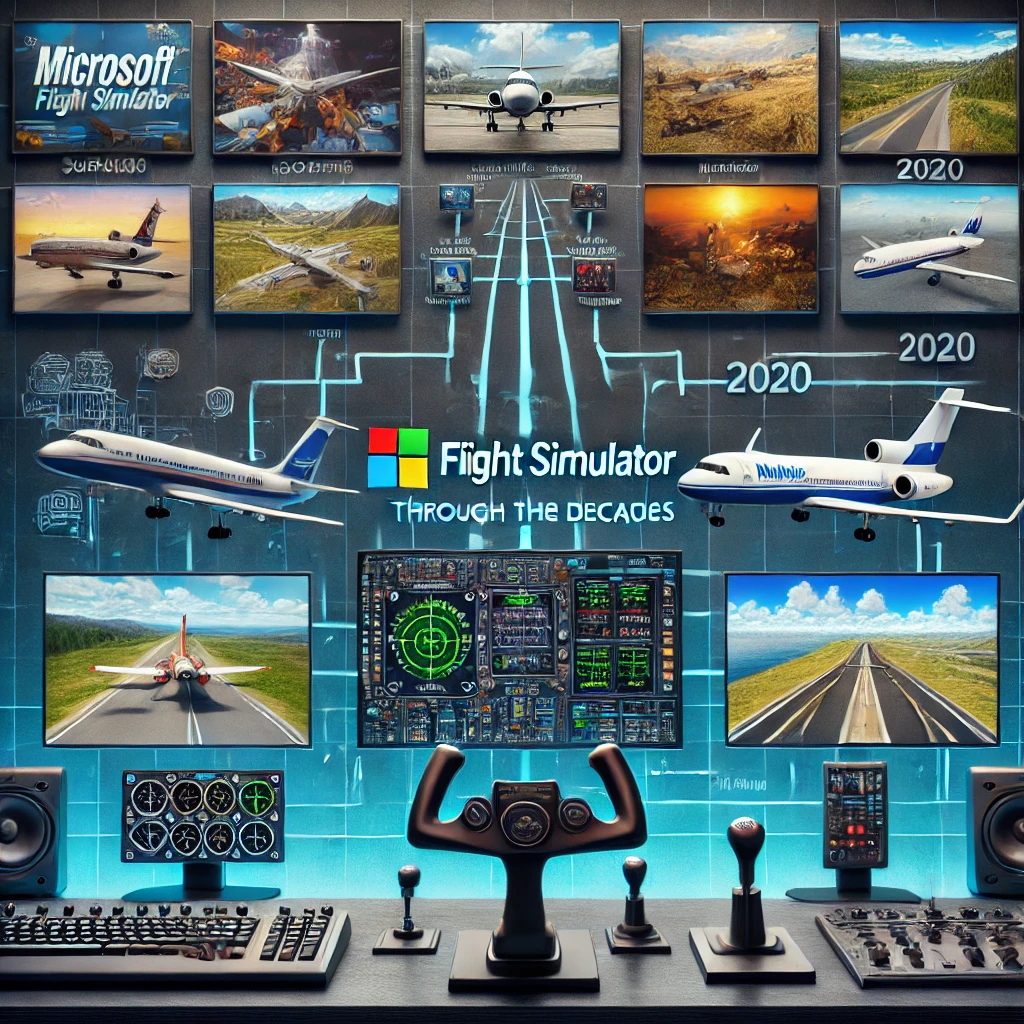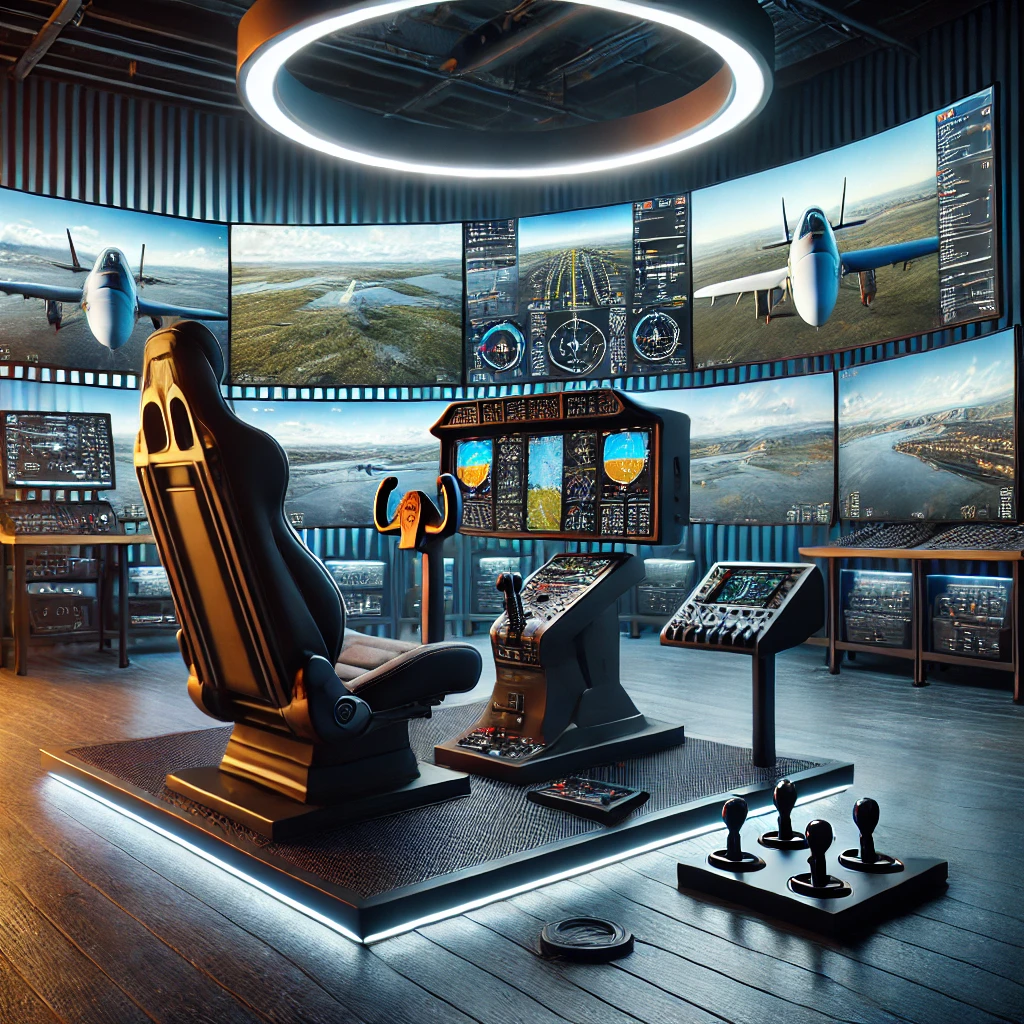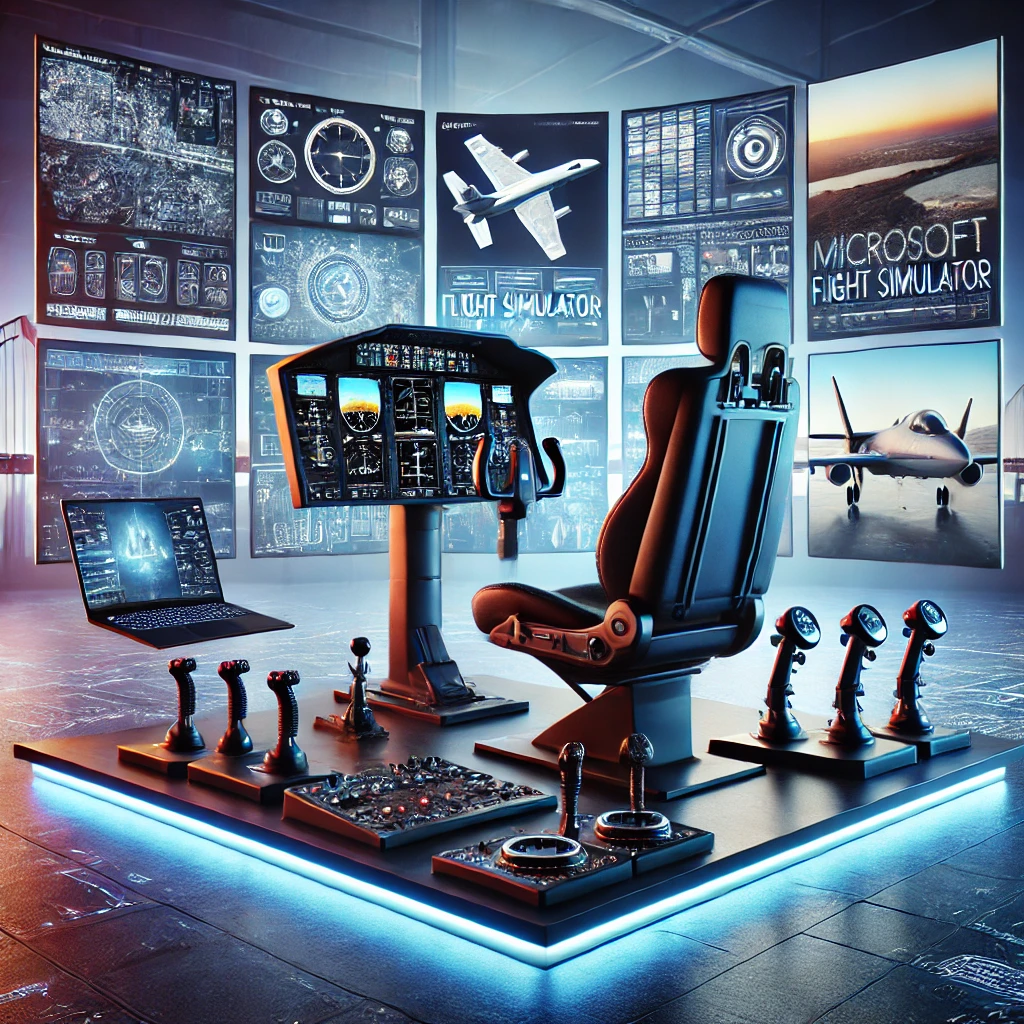History of Microsoft Flight Simulator – Revolutionizing Virtual Aviation:

Microsoft Flight Simulator didn’t just pop up out of nowhere—it had roots tied to the passion and expertise of a guy named Bruce Artwick. Bruce Artwick pioneered flight sim software with his company subLOGIC in the late 1970s. Introducing the concept of piloting a virtual aircraft via a home computer was a revolutionary step at that time. We’re talking pre-Facebook, pre-Instagram, back when computers themselves were barely making it into homes.
In 1982, Microsoft saw the potential in Artwick’s creation. They teamed up with him, leading to the first release of Microsoft Flight Simulator. It wasn’t just a game; it was an experience. Imagine firing up your brand-new personal computer and suddenly being able to navigate the skies. It was like stepping into a whole new world.
The collaboration between Microsoft and subLOGIC was like a match made in heaven. The combination of Bruce Artwick’s expertise in detailed flight mechanics and Microsoft’s forward-thinking vision resulted in a groundbreaking product. Users were immediately hooked by the realistic flight controls and the freedom to explore simulated skies. It felt like owning your own Cessna without ever leaving your chair.
The initial reception was a mixed bag, but there was definitely a crowd that saw its potential immediately. Although the simulation community was initially small, its members were tight-knit and ecstatic about the new software’s capabilities. Early reviews praised the simulator for its realism and potential, even if the graphics were nothing to write home about by today’s standards.
So yeah, Microsoft Flight Simulator started as a niche passion project but quickly turned into something much bigger. It set the stage for future advancements in flight sim technology and created a whole new category in computer gaming.
Click here to explore more about the early days of flight simulation.
Evolution Through the Decades:

The growth of Microsoft Flight Simulator in the ’80s and ’90s saw some serious technological leaps. Every new release was like adding turbo to a car. FS3 came out and brought better graphics and more sophisticated flight dynamics. It felt like you were truly piloting a plane, not just playing a game.
FS4 and FS5 took it even further. These versions introduced 3D graphics and realistic landscapes. Remember the pixelated worlds we used to stare at? Yeah, they started to look a lot more like actual Earth. It was an awesome upgrade, making the experience way more immersive. The whole world seemed to open up, from the detailed runways to the varied weather effects that started coming into play.
And it wasn’t just about eye candy. The developers worked hard on expanding the aircraft selection and fine-tuning the flight environments. You had more choices when it came to what you wanted to fly, whether it was a sleek jet or a reliable propeller plane. The diversity kept users coming back, eager to try their hand at new challenges and experiences.
Competitors kept an eye on Microsoft, but keeping up was another story. Microsoft Flight Simulator continually pushed the envelope, setting new standards for realism. Other flight sims tried to match this level of expertise and innovation, but it wasn’t easy. Microsoft was creating a legacy that others could only hope to touch.
The evolution through these decades wasn’t just about flashy features; it was about grounding the simulator in a richer, more lifelike experience that both new and seasoned users could appreciate. Every iteration brought something valuable to the table, making sure that this wasn’t just a passing fad, but a staple in the world of simulation.
Learn more about the technological leaps in flight simulators here.
Innovations in Realism and Simulation:

What really set Microsoft Flight Simulator apart was its relentless pursuit of realism. We’re not just talking about improving graphics—although those were impressive. The developers started integrating real-world flight data, making it a go-to tool for aviation enthusiasts and professionals alike.
Weather simulations emerged as a game-changer, with real-time data significantly influencing flight strategies and adding complex layers of challenge. If it rained in your simulated world, it was probably raining outside your window too. This kind of synchronization was unheard of and set a new bar for simulation games.
Partnering up with aviation experts and even airlines brought another level of authenticity. From realistic cockpit layouts to accurate aerodynamics, every update made you feel closer to being a real pilot. It wasn’t just about flying anymore; it was about managing a complete flight experience.
Satellite imagery and AI took things to a whole new level. These innovations made the landscapes and environments incredibly detailed. You could recognize landmarks, fly over your house, or navigate through familiar terrains. It turned a simple flight simulation into an expansive world full of opportunities to explore.
Discover how AI and satellite imagery are transforming flight simulators today.
One of the coolest things? User-generated content and mods. Microsoft Flight Simulator’s openness allowed creative enthusiasts to develop their own tweaks and additions. From custom planes to new airports, the community had a hand in shaping the simulator, keeping it fresh and engaging for everyone involved.
Challenges and Milestones:
Making a cutting-edge flight simulator isn’t all smooth sailing—there have been plenty of bumps along the way. Early on, technological limitations were a huge hurdle. Computers weren’t exactly powerhouses back then. Cranking out detailed flight physics and expansive worlds on limited hardware took some serious engineering wizardry.
User feedback played a big role in shaping Microsoft Flight Simulator. With each release, the developers listened closely to what users loved and what needed fixing. It was a loop of constant improvement powered by a dedicated community. This attention to detail was crucial for sustaining the simulator’s growth and keeping it relevant.
The release of Microsoft Flight Simulator X (FSX) in 2006 marked a significant milestone. This version brought phenomenal graphics and immense detail. Pilots experienced realistic day and night cycles, weather patterns, and diverse landscapes like never before. It felt like the pinnacle of what flight simulation could achieve at that time.
However, after FSX, the simulator went into a bit of a sleep mode. Microsoft stopped producing new versions for a while, causing a stir in the flight sim community. Modders and third-party developers tried to keep the spirit alive, but the lack of official updates made things tricky. Enthusiasts hoped for a comeback, and they got their wish in 2020.
The reboot of Microsoft Flight Simulator in 2020 was a game-changer. Using cutting-edge technology, it offered hyper-realistic graphics powered by satellite imagery and artificial intelligence. This release redefined what a flight simulator could be, attracting both old fans and a whole new generation of virtual pilots.
Microsoft Flight Simulator’s Impact and Future:

Microsoft Flight Simulator isn’t just a hit among gamers; it’s left its mark on aviation training and education too. Universities and flight schools saw the potential early on, using it as a tool to provide virtual flight experiences to students. No longer just a fun hobby, it became a legitimate educational resource.
The simulator’s influence goes beyond classrooms and training centers. It’s culturally significant, featuring in movies, TV shows, and even art installations. The idea of flying a plane from your living room captured imaginations and reached far beyond the typical gaming community.
Virtual reality (VR) is the next frontier. Using VR, the experience becomes even more immersive. It’s like being inside a real cockpit, feeling every dip and turn as if you’re genuinely soaring through the sky. For those serious about flight simulation, VR integration is a dream come true.
Looking ahead, future updates and technology promise even more enhancements. Imagine more detailed weather systems, more varied aircraft, and even smarter AI. The possibilities are practically endless, which is super exciting for anyone who’s been a fan over the years.
Community involvement keeps the simulator alive and well. Forums, social media groups, and fan sites are buzzing with activity. Pilots and enthusiasts alike share their experiences, advice, and user-generated content, helping to keep Microsoft Flight Simulator at the forefront of flight simulation. The developer’s continued engagement with the community ensures that this beloved simulator will keep soaring to new heights.

I have been looking at your site, and I do have a new PC coming that will work good with a flight simulator application, which I plan to start using. This was interesting about Microsoft, and I had not purchase any simulator software yet. Although, it looks like I will probably stick with Microsoft, alone because of the name and the quality that Microsoft usually provides.
It is good you are getting new PC for flight simulator and u need Microsoft flight simulator to start flying virtually.
I am a big gamer. I absolutely love playing games but I have not tried out any of these games. I will be sure to try them out. Who knows, I might end up liking them so thank you for this lovely review. I will be sure to share this article with my siblings as they too love to play games.
It is amazing how far technology has come when it comes to games and simulators! I cant believe Microsoft Flight Simulator is almost 40 years old! its only 2 years younger than my husband lol! I used to play “Top Gun” on Sega Genesis a loooong time ago, I could never land without crashing. Hopefully I will have better luck with this latest version of MFS once my new gaming computer arrives!
Good luck with the gaming, just make sure the computer meets it’s minimum requirement to play Flight Simulator 2020, you can set the graphic low or high and that depends if the computer have the latest graphiccards.
The first thing I got exposed to was the active community of gammers using Microsoft Flight Simulator. They were so hyped that I began to be interested in the topic myself. And once I saw Microsoft Flight Simulator for myself I understood their excitement. I know there is a lot of room to grow. But currently, this software is crushing the competition.
Thanks for the feedback. Flight Simulator was invented long time before Microsoft released Flight Simulator version.